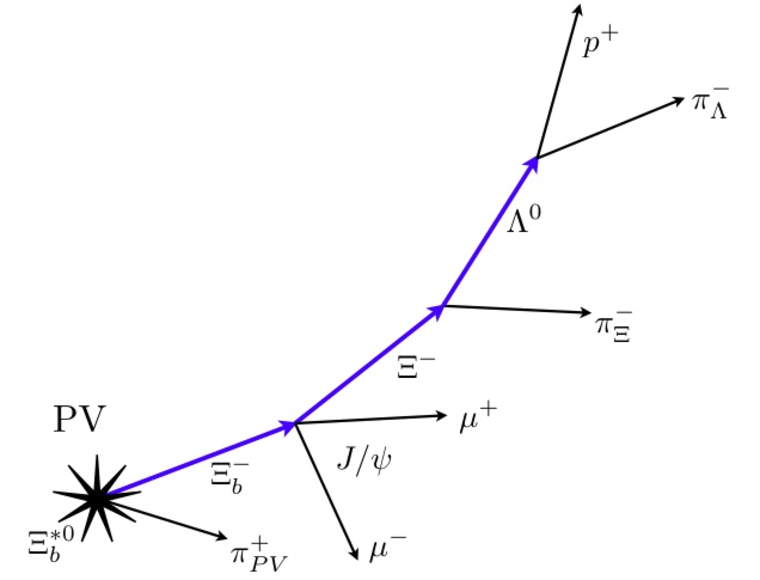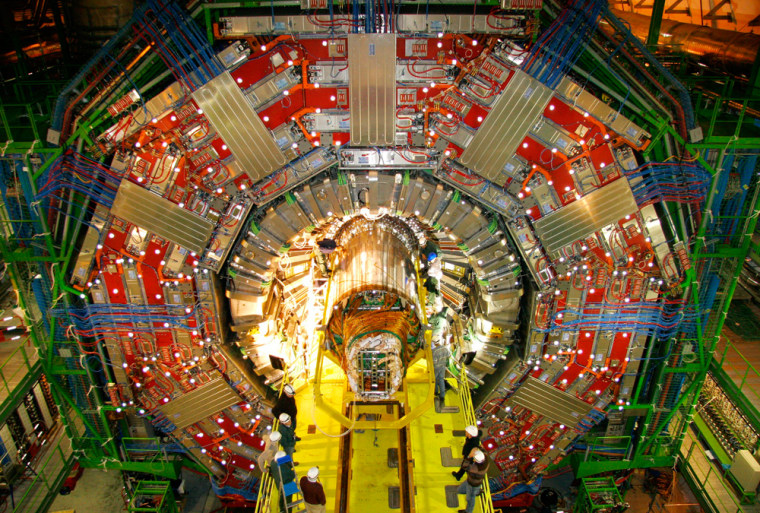European researchers say they have discovered a new subatomic particle that helps confirm our knowledge about how quarks bind — one of the basic forces in the shaping of matter.
The CERN physics research center said Friday that the particle was discovered at the Compact Muon Solenoid, one of the Large Hadron Collider's two main general-purpose detectors, in collaboration with the University of Zurich.
Joe Incandela, the physicist in charge of the experiment involved with the discovery, told The Associated Press that the particle was predicted long ago, but finding it was "really kind of a classic tour de force of experimental work."
The particle, known as an excited neutral Xi-b baryon, could not be detected directly because it was too unstable. Instead, its existence was inferred by the pattern of its decay into other subatomic particles.
The Xi-b particle, like other baryons such as protons and neutrons, is made up of three quarks. Protons and neutrons are combinations of "up" and "down" quarks (two up and one down for protons, two down and one up for neutrons). In contrast, the newly detected Xi-b particles consist of an up, strange and bottom quark. The particles are electrically neutral, with a spin of 3/2 and a mass comparable to that of a lithium atom, University of Zurich researchers said.
Xi-B baryons have been previously detected in their ground states, but the particles created in the LHC's proton-on-proton collisions are the first to be observed in their excited states. They're also the first newly discovered particles to be reported by the Compact Muon Solenoid collaboration, which takes in thousands of researchers.
The University of Zurich said 21 of the Xi-b decay events were detected during a series of collisions at an energy level of 7 trillion electron volts last year. Those events were enough to determine that the decay events were more than a statistical fluke.
"The discovery of the new particle confirms the theory of how quarks bind and therefore helps to understand the strong interaction, one of the four basic forces of physics which determines the structure of matter," the university said in a news release.

CMS physicist Vincenzo Chiochia, one of the co-leaders of the search, told the Symmetry Breaking blog that "finding this complicated decay in such a messy event makes us confident in our abilities to find other new particles in the future.”
Another experimental group at the LHC, using the ATLAS detector, reported its first new particle last year. That particle, known as the Chi-b (3P), consists of a bottom quark and its antimatter equivalent.
Physicists expect to find a wide variety of subatomic particles consisting of various combinations of quarks, but their prime target is the Higgs boson, a different type of fundamental particle that is predicted by theory but has not been detected. If it exists, the Higgs boson would help explain why some particles have mass while others don't.
CERN officials have said they expect the LHC to provide evidence of the Higgs boson's existence or non-existence by the end of this year.
More about the particle quest:
- Scientists see 'endgame' for subatomic quest
- Good news for Higgs hunters: W boson pinpointed
- Higgs vs. hype: A mini-guide
- Special report on the Big Bang Machine
This report includes information from The Associated Press and msnbc.com.
